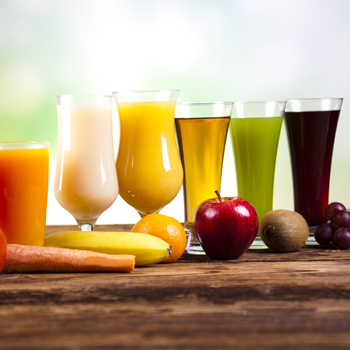ผู้ประกอบการเครื่องดื่มไทย…ปรับตัวระมัดระวัง
ท่ามกลางปัจจัยแวดล้อมหลากหลายและภาษีสรรพสามิตใหม่
โดย: ศูนย์วิจัยกสิกรไทย
Kasikorn Research Center
www.kasikornresearch.com
อุตสาหกรรมเครื่องดื่มไทยเติบโตในกรอบจำกัด..ท่ามกลางปัจจัยที่หลากหลาย
อุตสาหกรรมเครื่องดื่มของไทยมีฐานการบริโภคกว้างครอบคลุมผู้บริโภคทุกช่วงวัย เป็นผลให้ในตลาดมีสินค้าหลากหลายประเภทเพื่อรองรับพฤติกรรมการบริโภคที่แตกต่างกัน ไม่ว่าจะเป็นเครื่องดื่มแอลกอฮอล์และเครื่องดื่มไม่มีแอลกอฮอล์ ซึ่งจากความหลากหลายดังกล่าวทำให้เกิดการทดแทนกันได้ของผลิตภัณฑ์ทั้งในกลุ่มผู้ผลิตที่มีแบรนด์ ผู้ประกอบการร้านค้า รวมไปถึงผู้นำเข้า ส่งผลต่อเนื่องให้ในอุตสาหกรรมเครื่องดื่มมีการแข่งขันที่รุนแรงระหว่างผู้ประกอบการเพื่อช่วงชิงส่วนแบ่งทางการตลาดและออกผลิตภัณฑ์ใหม่มาเพื่อคงความสามารถในการแข่งขัน
อย่างไรก็ดี แม้อุตสาหกรรมเครื่องดื่มจะมีมูลค่าตลาดค่อนข้างสูง แต่ภาพด้านการเติบโตอาจจะไม่สดใสมากนัก โดยในปี 2559 อุตสาหกรรมเครื่องดื่มไทยมีมูลค่าตลาดมากกว่า 468,924 ล้านบาท แต่ในปี 2560 (ม.ค.-มิ.ย.) กลับพบว่ามูลค่าตลาดมีแนวโน้มลดลงเมื่อเทียบกับช่วงเดียวกันของปีก่อนหน้า ส่วนหนึ่งมาจากพฤติกรรมการจับจ่ายที่แปรผันตามกำลังซื้อของประชาชน กระแสการบริโภคของประชาชนที่ปรับเปลี่ยนตามเวลา ตลอดจนการออกกฎระเบียบควบคุมการบริโภคสินค้าบางประเภท เช่น กำหนดเวลาการจำหน่ายเครื่องดื่มแอลกอฮอล์ นอกจากนี้ ล่าสุดกรมสรรพสามิตได้ประกาศอัตราภาษีใหม่เมื่อวันที่ 16 กันยายน ที่ผ่านมา โดยมีเจตนาลดการบริโภคผลิตภัณฑ์ที่มีผลกระทบต่อสุขภาพของประชาชน ซึ่งผลของภาษีน่าจะเป็นอีกหนึ่งปัจจัยที่กดดันยอดขายของผู้ประกอบการในอุตสาหกรรมเครื่องดื่มให้ยังมีภาพการเติบโตในกรอบจำกัด เนื่องจากผู้บริโภคอาจมีแนวโน้มระมัดระวังในการบริโภคมากขึ้น
Thai Beverage Industry Grows at a Meager Pace amid Several Downsides
The Thai beverage industry has a broad consumer base, as evidenced by the vast array of both alcoholic and non-alcoholic drinks marketed here to meet the tastes of all consumer segments. Such an extensive range of beverages has resulted in a large degree of product substitution, in particular, vis-à-vis branded and imported drinks, plus beverages produced by retailers, thus steepening competition among producers to vie for greater market share and introduce new beverages to maintain their competitiveness.
Contrary to the high market value of the overall beverage industry, its growth prospects are not very encouraging. In 2016, the turnover totaled over THB 468.9 billion, but declined steadily in 1H17 from that recorded during 1H16, partly because of eroding purchasing power, changing consumer habits and regulations, such as, fixing of alcoholic beverage sale hours to control consumption of certain beverages. Most recently, new excise tax rates were put in place by the Excise Department on September 16, aimed at reducing the consumption of some beverages having detrimental effects on health. The excise tax hikes are said to be another factor that may dent overall beverage sales as consumers become more cautious towards their spending.









